This Week’s Guest Blogger is C J Ward a Retired Garden Designer and Self-professed Plant Nerd who iscurrently writing a book
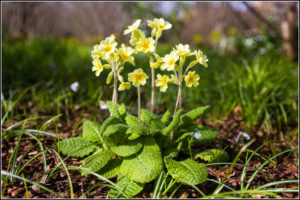
In Praise of Primulas
The cheerful countenance of a primula is such a welcome sight. They pierce late winter’s gloom with their earnest wee faces, announcing the arrival of spring. Their dainty, little beauty speaks to a simpler time, of childhood innocence and bygone days, wistfully recalled. And within these small, brightly coloured packages come the best of things- the warmth of remembrance; the renewal of hope; and the sweetness of life in that very moment.
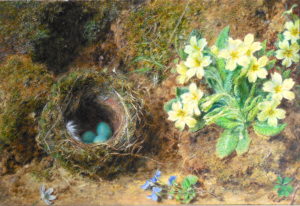
Bird’s Nest and Primroses c1855 Watercolour on paper by William Henry Hunt English artist 1790-1864
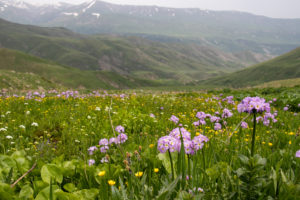
Primula denticulata growing in the moutain valley in Armenia with Ranunculus and Achillea
IN THE WILD
Primulas are happiest in the damper, shadier places and can be found adorning mountain valleys and rocky ridges; gracing the grasslands and open woodlands; thriving on embankments and under hedgerows. Growing from northern and eastern Europe, across North Africa to the Himalayas and through China to Japan, there are around 500 known species.
Primulas are multi-flowered, rising from a sturdy stem in loose umbels or tightly-packed spheres or nestled low, atop a rosette of leaves. Left to their own devices, primula species merrily interbreed in nature, constantly creating new hybrids.

Primula japonica growing along the tree lined Yanagizawa River In Japan
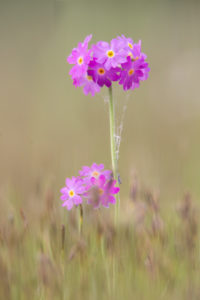
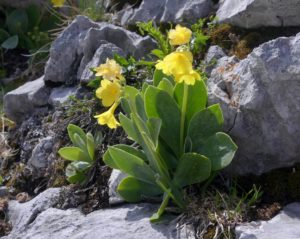
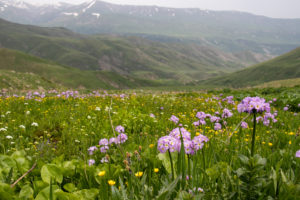
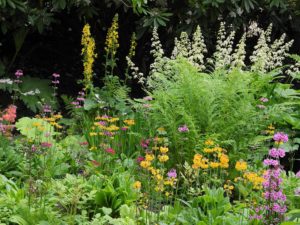
Primula bed in the Bog Garden Butchart Gardens Victoria, British Columbia Canada. Photo by C.J.Ward
IN THE GARDEN
Primulas suit a variety of styles, from the pleasant ramble of a cottage garden to the clean, modern aesthetic of an urban garden. Depending on the species, they grow well in rockeries, beds, borders, bog gardens, containers and in Auricula Theatres. An amiable companion plant, they mix well with a lot of other genii that enjoy similar conditions. These carefree flowers tend to look their best when allowed to naturalise freely. They will form neat clumps that will soon carpet the area with their vernal optimism.
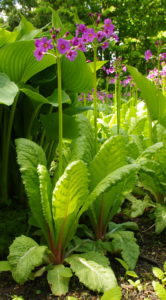
Primula japonica
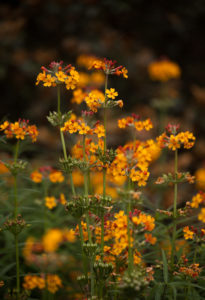
Primula bulleyana
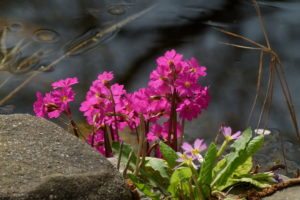
Primula Rosea, Germany
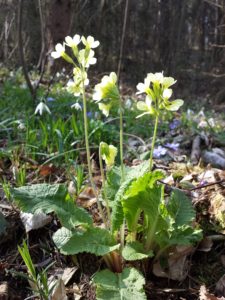
Primula elatior Munster, Germany
IN FOLKLORE AND MYTHOLOGY
The primula has meaning in many cultures.
To the Celts, it is associated with the fairies. Used with yellow gorse as a Beltaine decoration, bunches of primroses were left on the doorstep, encouraging the hidden folk to bless the house within. T’was said that if one ate the blossom, one could expect to see a fairy soon after. Patches of delicate yellow primroses were believed to be portals to the fairies’ realm, for primroses grew in Tir na nOg.
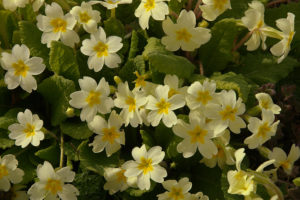
The gateway to Tir na nOg or a simple patch of Primula vulgaris growing near the railway line in Chipping Sodbury, England
In Norse mythology, primulas are one of Freya’s flowers, for they are golden like the goddess of love. Called “Lady’s Keys”, oxlips could open the gates to milady’s hall and were used in Vernal Equinox ceremonies of life and rebirth, dedicated to the Norse Goddess.
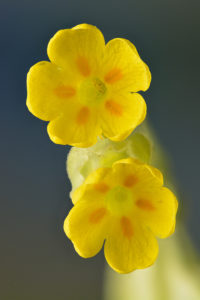
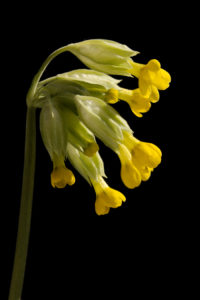
Primula veris
In the mythology of the Romans, primulas were a gift to the earth from the gods Flora and Priapus to honour their son Paralisos after he died of a broken heart. The Victorians took this myth as the basis for their custom of planting primula on the graves of children, accounting for their abundance in churchyards across England.
In the Victorian Language of Flowers, however, primulas symbolise young love, the I-cannot-live-without-you kind.
While in Japan, primula indicates the longer lasting variety of love and is often used in spring Ikebana arrangements, given as a token of abiding affection.
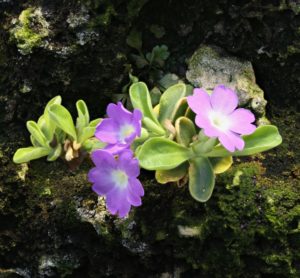
Primula allionii
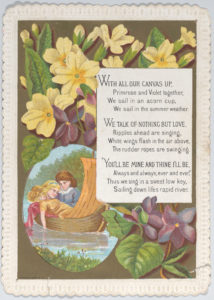
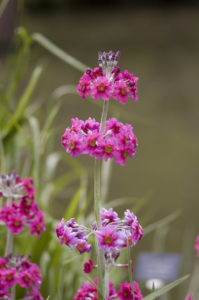
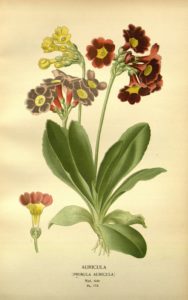
IN TRADITIONAL MEDICINE
Primulas have been employed for similar uses, wherever they are found, to treat a variety of conditions. In Sino-Himalayan cultures, they have long been cultivated for their medicinal properties, for everything from rheumatitis to gout and from headaches to ulcers.
In England, Ireland and Scotland, fresh leaves were rubbed on toothaches or used in salves and poultices on wounds. In the spring, the flowers were gathered to make Cowslip Wine. Its sedative properties make it a good treatment for insomnia and later, by Tudor herbalists, in a tincture to calm nervous conditions.
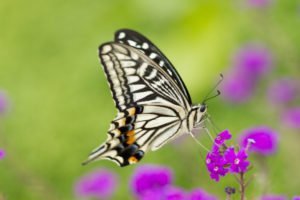
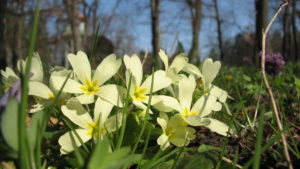
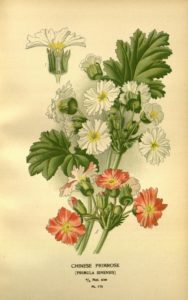
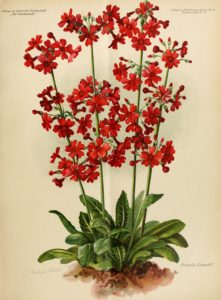
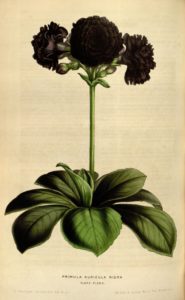
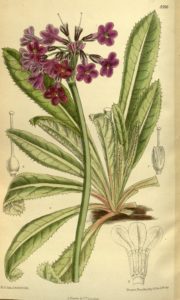
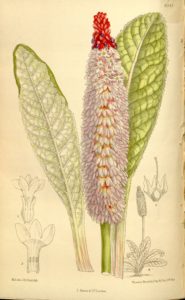
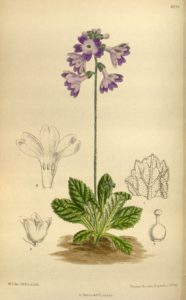
IN ART
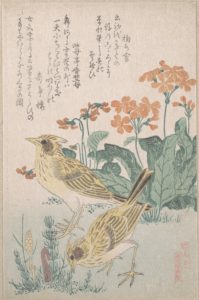
Skylarks and Primroses, Woodblock print with ink and colour on paper c. 1805-10
Kubo Shunman, Japanese artist 1757-1820
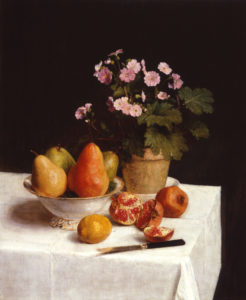
Still Life with Primroses, Pears and Pomegranates, Oil on canvas, c. Late 19th century
By Henri Fantin-Latour, French artist 1836-1904
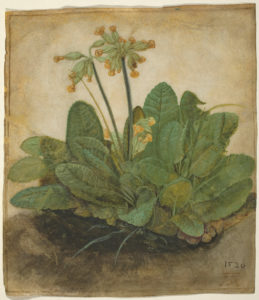
Tuft of Cowslips, Gouache on vellum 1526, Albrecht Durer, German artist 1471-1528
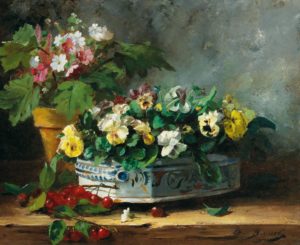
Pansies and Primroses, Oil on canvas c.1941, Alfred Arthur Brunel-Neuville, French artist 1851-1941
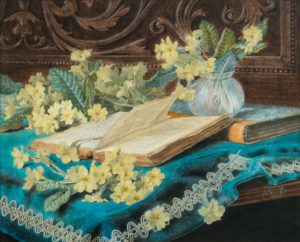
Still Life with a Book and Primroses, Mixed media on canvas 1886, Marga Toppelius-Kiseleff Finnish artist 1862-1924
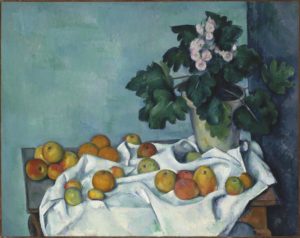
Still Life with Apples and a Pot of Primroses, Oil on canvas c.1890, By Paul Cezanne French artist 1839-1906, Image via The Metropolitan Museum of Art
IN POETRY
Ring-ting! I wish
I were a primrose,
A bright yellow primrose
Blowing in the spring!
The stooping boughs
Above me,
The wandering bee to
Love me,
The fern and moss to
Creep across
And the elm-tree for
Our king.
-“Wishing”
By William Allingham Irish poet and diarist 1824-89
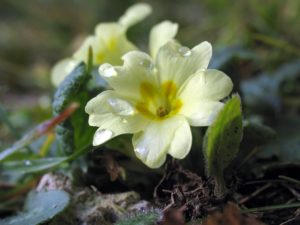
Primula vulgaris blooming in Slovenia
Behold, my love, how green the
Groves,
The primrose banks how fair;
The balmy gales awake the flowers,
And wave thy flowing hair.
– ” Behold, my love, How Green the Groves”
By Robert Burns
Scottish poet and lyricist
1759-96
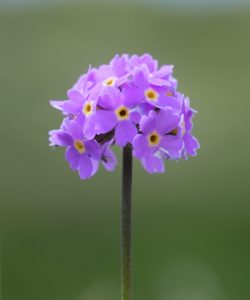
Primula rosea growing in the Altai Mountains, Mongolia
The primrose opens wide
In spring
Her scent is sweet and good:
It smells of every happy thing
In sunny lane and wood.
-The Primrose Fairy
By Mary Cicely Barker
English author and illustrator
1895-1973
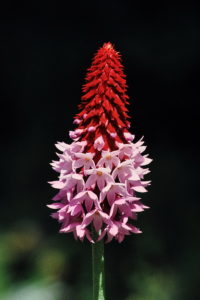
Primula vialii growing in the mountains of China
Thy smiles I note, sweet early Flower,
That peeping from thy rustic bower
The festive news to earth dost bring,
A fragrant messenger of Spring.
– To a Primrose
By Samuel Taylor Coleridge
English poet
1772-1834
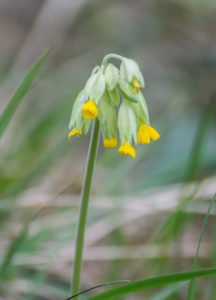
Primula elatior blooming for the Fairy Queen in Aveyron, France
Give us again the song of birds,
The scent of blossoms on the air,
The rustle of the growing grass,
The dainty primrose, sweet and fair.
“Primrose Time”
By Mary Dow Brine
American author
1816-1913
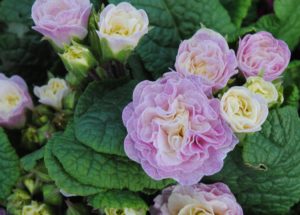
Primula ‘Belarina Pink Champagne’
Over hill, over dale,
Thorough bush, thorough brier,
Over park, over pale,
Thorough flood, thorough fire!
I do wander everywhere,
Swifter than the moon’s sphere;
And I serve the Fairy Queen,
To dew her orbs upon the green;
The cowslips tall her pensioners be;
In their gold coats spots you see;
Those be rubies, fairy favours;
In those freckles live their savours;
I must go seek some dewdrops here,
And hang a pearl in every cowslip’s ear.
“A Fairy’s Song”
From A Midsummer Night’s Dream
By William Shakespeare
English poet and playwright
1564-1616
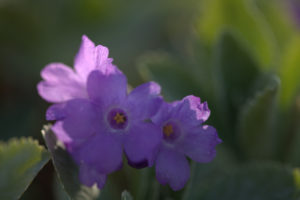
Primula marginata peeping from its rustic bower in the Italian Alps
CJ Ward is from Vancouver, British Columbia, Canada. She is a Retired Garden Designer and Self-professed Plant Nerd, currently writing a book. To find out more about her follow her on Instagram @cjwardgardens
All images, except where indicated are via Wiki Commons. Contact C J Ward for a full photo credit list
